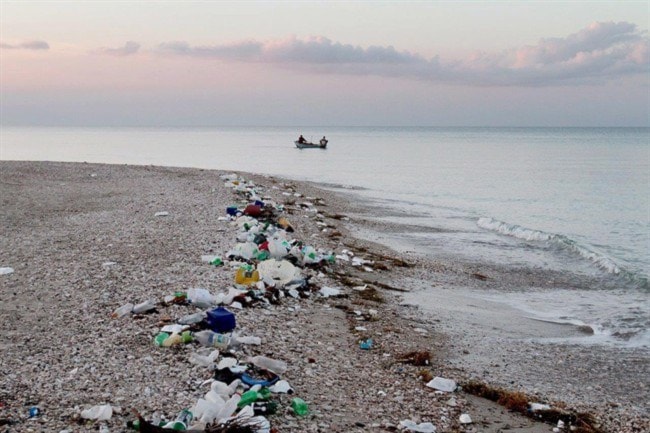By Alison Auld, The Canadian Press
Around eight million metric tons of shopping bags, bottles, food wrappers, toys and other plastic waste drifted into the world's oceans in a single year, says a new study that warns the amount could double over the next decade.
The unique research, published Thursday in the journal Science, suggests that between 4.8 million and 12.7 million metric tons of plastic entered the oceans in 2010 from people living within 50 kilometres of coastlines in 192 countries.
In the same year, those countries generated a total of 275 million metric tons of plastic waste, with much of it coming from mismanaged landfills and litter.
Kara Lavender Law, one of the report's authors, said she was stunned by the findings after determining that eight million metric tons is the equivalent of several shopping bags of plastic per foot of coastline.
"I've been out to sea and I've seen plastics in the middle of the open ocean, so I didn't think it was going to be a small number," she said in an interview from Portland, Me.
"But when I start to think of five grocery bags per foot of coastline, that's pretty staggering."
The researchers found that countries with the highest populations, the largest amount of coastline and less developed waste management systems produced the most plastic garbage that was likely to blow into waterways.
China was by far the biggest generator of mismanaged plastic waste, with several other East Asian countries and the United States making up the top 20 offenders. Canadians produce a high rate of waste per person, but strong management systems mitigate the amount that ends up in the marine environment, she said.
"Developing countries are experiencing fast economic growth and with it comes increased consumption, but they don't have the infrastructure to manage that waste," she said.
Law said what makes this research unique is that, for the first time, it determines the volume and sources of plastic marine debris coming from land. Previous studies looked primarily at plastics on the ocean's surface, but Law says those estimates are between 20 and 2,000 times lower than her estimates of what's entering the ocean.
"We know there's more going into the ocean than we can presently account for," Law said.
Janna Jambeck, an environmental engineering professor at the University of Georgia and the study's lead author, said the amount of plastic ending up in the ocean could rise to 155 million metric tons by 2025 if consumption isn't curtailed and waste management infrastructure isn't improved.
"We're being overwhelmed by our waste," she said.
Boris Worm, a marine biologist at Dalhousie University in Halifax, said the research paints a grim picture for marine species that come in contact with toxins in the plastic. There is also concern that the resins in plastic could be ingested by people eating seafood.
"Unimaginable quantities of plastic waste needlessly strangle and poison untold marine life forms every day," he said.
"I am concerned that plastic may become the DDT of our time — it's everywhere, it does not go away and it is harmful to life."
Follow @alison_auld at Twitter



